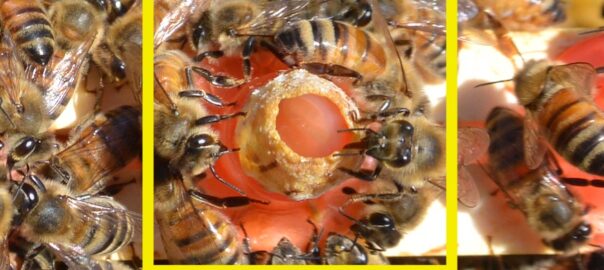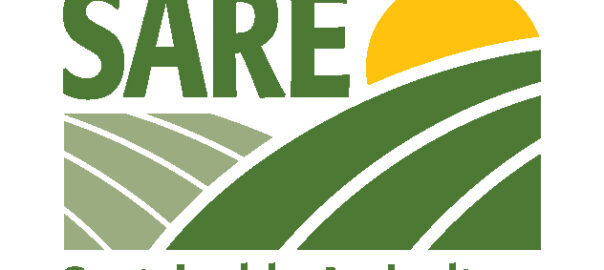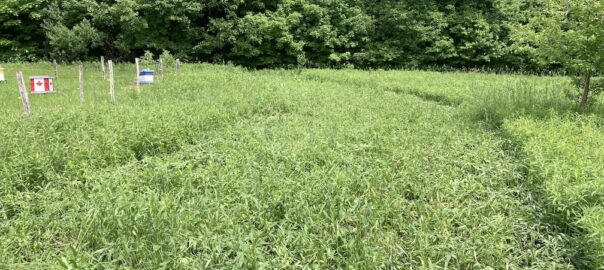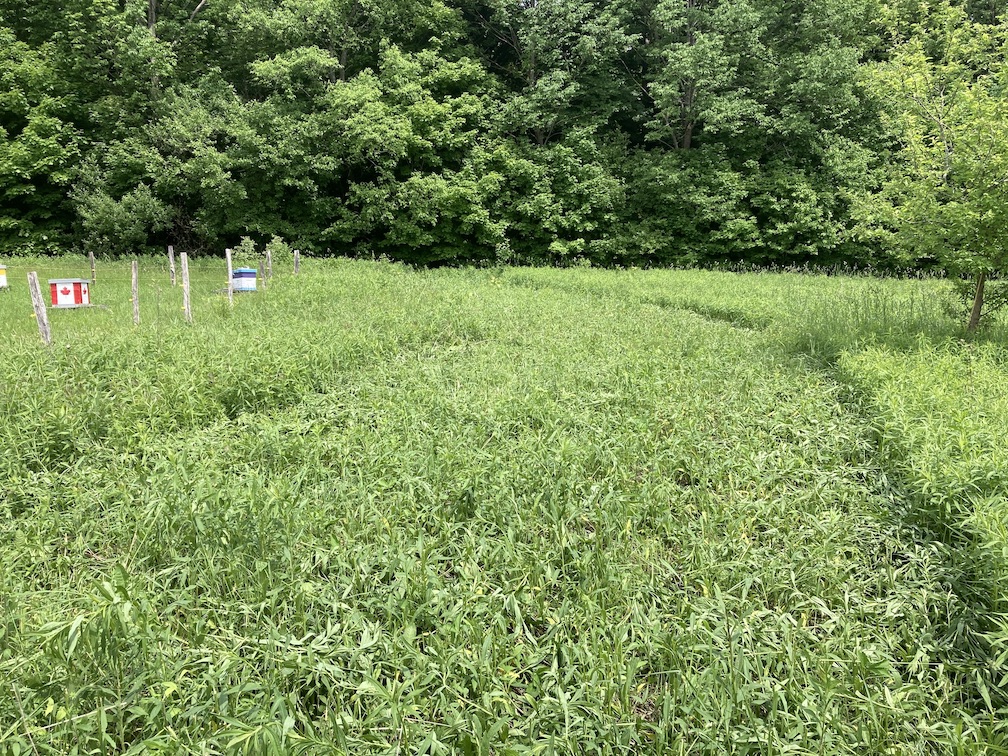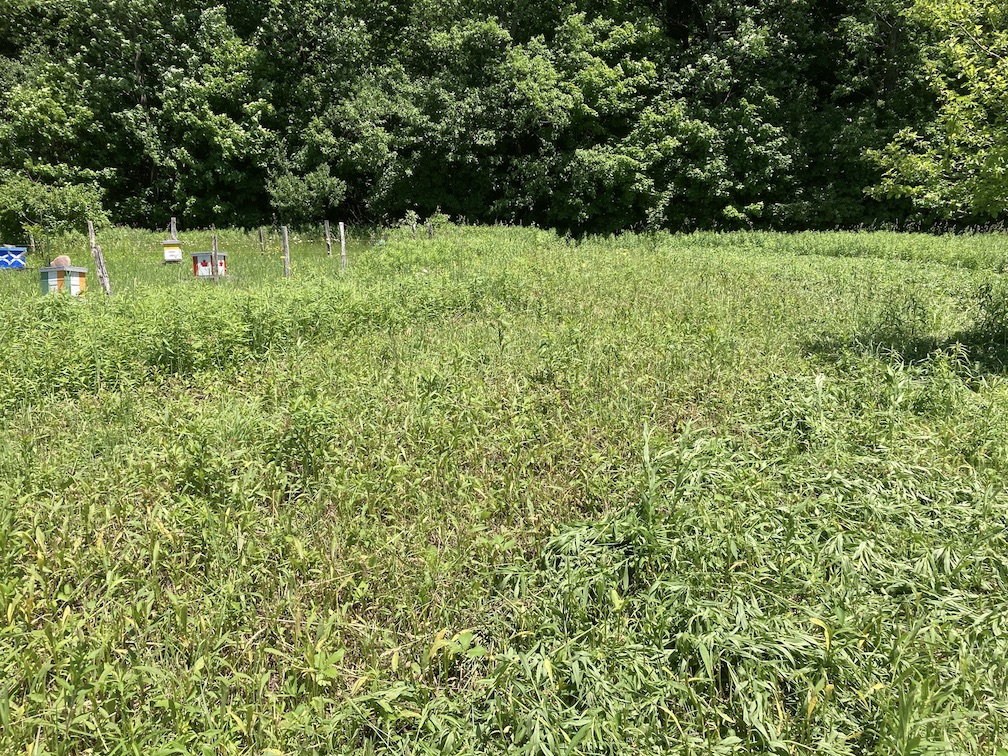On April 23 I started another round of swarm queen trials. This summer I and my volunteers will focus on the nuc production process I hinted at in my last post. In a nutshell, I put the queen frame in a nuc, and push that nuc to the swarm point, leaving the queen free to roam the colony.
This nuc colony had to draw out the swarm queen frame from scratch – they just had foundation to start with. They went gangbusters, drawing drone comb over the queen cups:
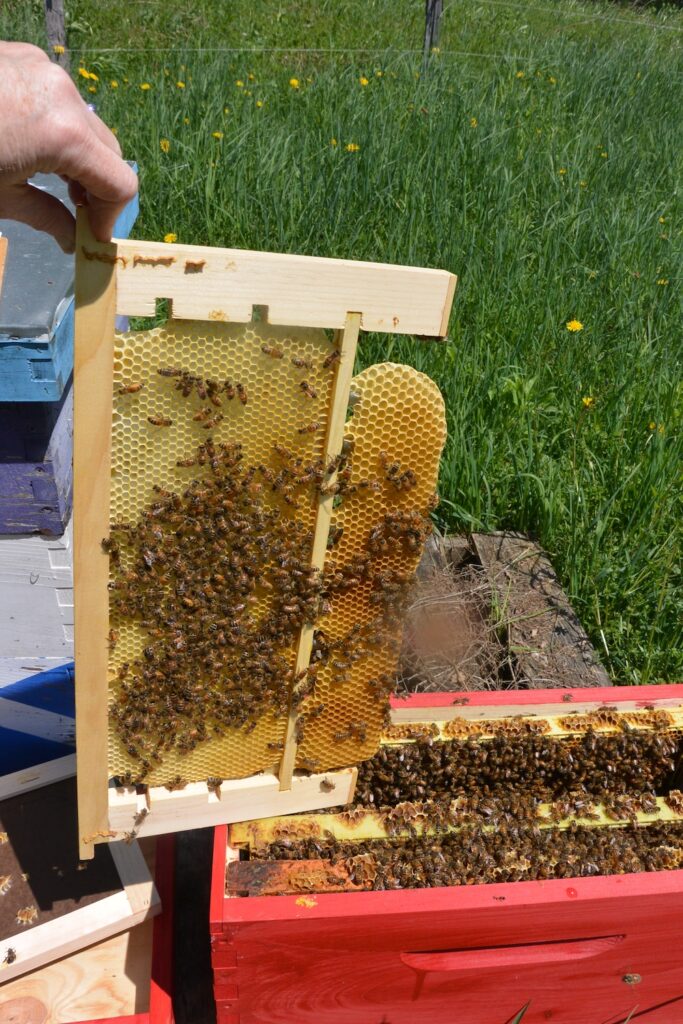
I removed the drone comb and put it back. The upper brood area is full of eggs. I would expect to see some swarm cup action in the next two weeks.
This nuc started on 5/1 with a frame left over from last year’s trials. They added some drone comb, but also started four swarm cells (indicated by the arrows). There are no other swarm cells started in this nuc.
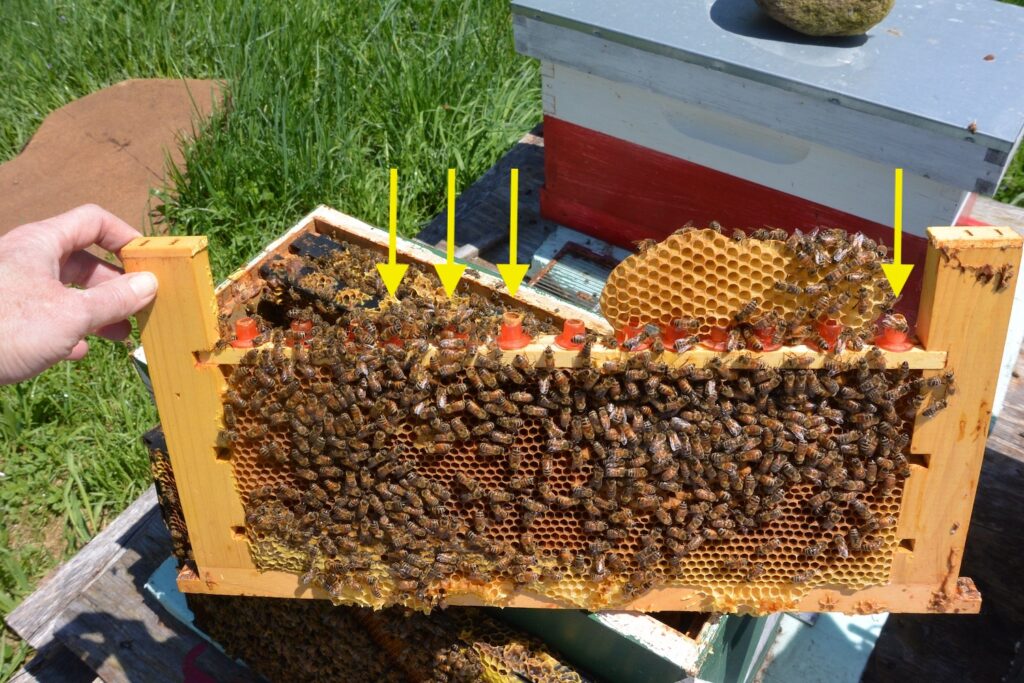

I was pressed for time yesterday, but will move them into a cell finisher and replace the frame to see if I can get another round out of this swarm cycle. I left the drawn comb since it was chilly and I would need to take time to carefully remove it around the one queen cell at the end.
So far the behavior matches my expectations. You can see the queen cups are being worked (they were wax-dipped prior to placement). The workers narrowed the openings on all of the cups — which seems to be the first thing the workers do with the JZBZ cups. (Side note, perhaps another hint at a mechanical trigger to laying fertilized versus unfertilized eggs.) They have not started swarm cells elsewhere, which suggests they’re amenable to doing so where I suggested (on my frame so I can now steal them).
I am going to dig through my supplies to see if I can find darker JZBZ cups, though. It’s almost impossible for me to see eggs and small larvae against the red. (It’s possible that I missed other charged cells because of this, so I’ll know tomorrow if that’s the case or not.)
 This material is based upon work supported by the National Institute of Food and Agriculture, U.S. Department of Agriculture, through the Northeast Sustainable Agriculture Research and Education program under subaward number FNE24-102. Any opinions, findings, conclusions, or recommendations expressed in this publication are those of the author(s) and do not necessarily reflect the view of the U.S. Department of Agriculture.
This material is based upon work supported by the National Institute of Food and Agriculture, U.S. Department of Agriculture, through the Northeast Sustainable Agriculture Research and Education program under subaward number FNE24-102. Any opinions, findings, conclusions, or recommendations expressed in this publication are those of the author(s) and do not necessarily reflect the view of the U.S. Department of Agriculture.
